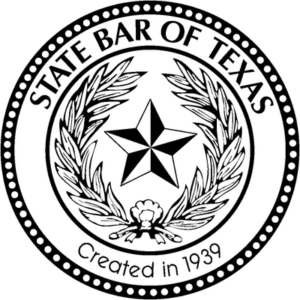East Los Angeles Employment Lawyers
The Akopyan Law Firm A.P.C. stands ready to fight for the rights of workers in East Los Angeles dealing with discrimination, harassment, retaliation, wrongful termination, or other illegal conduct in the workplace. The firm also stands ready to provide small businesses in East Los Angeles, economical and efficient solutions to problems involving employment law. Our substantial experience in approaching employment disputes from both sides gives us rare insight into the mindset of the opponent, which truly goes a long way to achieving the best possible outcome.
About East Los Angeles, California
East Los Angeles or East L.A., often referred to by locals as “East Los”, is an unincorporated area in Los Angeles County. Historically, when it was founded in 1873, the neighborhood northeast of downtown known today as Lincoln Heights was originally named East Los Angeles, but in 1917 residents voted to change the name to its present name. Today it is considered part of L.A.’s Eastside, the geographic region east of the Los Angeles River that includes three neighborhoods within the city of Los Angeles (Boyle Heights, El Sereno and Lincoln Heights) and the unincorporated community in Los Angeles County known today as “East Los Angeles”. When Lincoln Heights, the first east-side subdivision created in 1873, changed its name in 1917, Belvedere (Belvedere Gardens and Belvedere Heights) and surrounding unincorporated county areas were given the moniker of East Los Angeles. By the 1930s, most maps had started to label the Belvedere area as “East Los Angeles”
By the early 1920s, workers in the sprouting industrial district to the south were seeking nearby housing. At the time, the unincorporated region was undeveloped and or preserved for agriculture and oil extraction. Belvedere township included the territory that in 1902 became the city of Montebello. In 1932 local business leaders gave the name East Los Angeles to Belvedere and adjacent areas (that had been known as Belvedere Gardens, Belvedere Heights, Laguna, etc.) By the onset of World War II, East Los Angeles was a nearly exclusively Latino community, soon reinforced by Mexican workers who arrived to man the machines in the area’s burgeoning war industries. Although the face of the city of Los Angeles and its surrounding communities has changed considerably, East Los Angeles has maintained this basic character throughout the last sixty years. As a result of its history as a long-standing Mexican American community, the area of East Los Angeles continues to be studied and documented by scholars from around the world. East Los Angeles was a significant site during the Chicano Movement. It is not only the single largest Chicano/Mexicano population in the country, but also the largest Hispanic community in the United States. It is also important to note that, although the majority population is mono-cultural, there is a tremendous amount of diversity within the context of that cultural experience, ranging from new immigration from Mexico, migration from other states, and the long-time presence of multi-generational residents dating back to the ranchos.
East Los Angeles is located in central Los Angeles and is home to more than 130,000 residents. It covers approximately seven and a half square miles and encompasses the following zip codes: 90022, 90023, and 90063. The Akopyan Law Firm A.P.C. is headquartered in Los Angeles which is minutes away from East Los Angeles. Thus, our lawyers stand ready to serve employees and employers in East Los Angeles with all their employment law needs.
Your Search For The Best East Los Angeles Employment Attorneys Is Over
Securing the right labor lawyer in East Los Angeles can indeed be a challenging endeavor. The legal landscape here is diverse, with a wide array of firms to choose from, each with its unique approach and philosophy. It’s crucial to understand that not every employee attorney in East Los Angeles will be a suitable match for every case, as preferences and strategies can vary significantly. While some employment lawyers may lean toward swift and simple low-value settlements, others are more inclined to embark on a prolonged and robust legal battle that ultimately leads to a resolution reflecting the full value of the case. An online search for “East Los Angeles employment lawyer” or “wrongful termination attorney in East Los Angeles” often yields a multitude of paid advertisements from lawyers willing to take the easier route. The Akopyan Law Firm stands apart with a resolute commitment to securing the best possible outcome for each client, regardless of the complexity or scale of the challenge. Our dedication to delivering high-quality work on every case leads us to selectively limit our practice, ensuring that every client receives the personalized attention and exceptional representation they deserve. We consider every employee who becomes our client a part of our extended family. While we take great pride in the top-notch, personalized service we provide, we encourage you to explore what our clients have to say and examine our online reviews to witness the satisfaction of our past clients. The relationships we build with our clients often extend beyond the duration of the case itself, emphasizing our commitment to lasting connections. Our East Los Angeles employment lawyers passionately advocate for our clients, as evidenced by the excellent results they’ve achieved. If you’re in search of employment lawyers in East Los Angeles who will fight fervently for your rights and prioritize quality over quantity, we encourage you to reach out to us today for a complimentary case evaluation. Your legal journey begins here, and we’re ready to stand by your side every step of the way.
We Can Help East Los Angeles Residents With:
Featured Article:
Establishing the Link Between Heart Attacks and Wrongful Termination in California
📌 Key Takeaways FEHA Protections for Heart Conditions: Under California law, the Fair Employment and Housing Act (FEHA) protects individuals whose heart conditions, such as heart attacks, substantially limit major life activities. Employers are prohibited from taking adverse actions based on such conditions. Proving Disability Discrimination: Establishing a prima facie case under FEHA involves showing a qualifying medical condition, the ability to perform essential duties, an adverse employment action, and a causal connection between the condition and termination. Critical Role of Evidence and Timing: Documentation—such as medical records, internal communications, and performance reviews—can support claims. Timing of termination relative to condition disclosure may suggest retaliatory motives. Record Preservation Importance: Keeping relevant documents like HR communications, leave requests, and accommodation correspondence can be decisive in building a claim. Consultation and Legal Complexity: Due to the fact-specific nature and legal nuances involved, professional consultation is strongly encouraged to understand how FEHA may apply. For those navigating post-heart attack termination concerns, understanding the legal framework and preserving the right evidence can be essential to evaluating potential claims. For individuals in Los Angeles recovering from a heart attack, unexpected job termination can feel like a second blow. When recovery is already physically and emotionally taxing, losing employment without clear justification may prompt serious questions. Could the termination be tied to the heart condition? If so, understanding California law becomes essential. This article explores the legal standards for proving wrongful termination based on a medical condition under the California Fair Employment and Housing Act (FEHA), with a focus on the evidentiary burdens and employer obligations. Legal Standards Under California Law Under California law, generally, FEHA extends broad protections to individuals with qualifying medical conditions. A heart attack, often resulting in significant limitations on major life activities, may meet the statutory definition of a disability. FEHA prohibits adverse employment actions that occur because of such a disability, provided the employer was aware of the condition. A prima facie claim of disability discrimination requires a showing of the following: The existence of a disability. Capability to perform essential job functions with or without reasonable accommodation. Termination or other adverse employment action. A causal nexus between the disability and the adverse employment action. If the employee makes a prima facie showing, the employer then has to articulate a legitimate, non-discriminatory reason for the termination. However, if that happens, then the employee may present evidence that the employer’s stated reason is merely pretextual. Crucially, timing can play a pivotal role. Terminations that closely follow disclosure of a heart condition or medical leave may raise inferences of retaliatory motivation. While proximity alone may not prove unlawful conduct, it often informs the broader evidentiary narrative. Note: Legal standards and interpretations are subject to change. Additionally, strict statutory deadlines apply for filing discrimination claims with relevant agencies (e.g., the Civil Rights Department (CRD) in California or the Equal Employment Opportunity Commission (EEOC)), making timely action crucial. Please contact a qualified employment lawyer if you feel that your rights may have been... Read more









Millions of Dollars Recovered For Our Clients
Check Out Our Case Results




